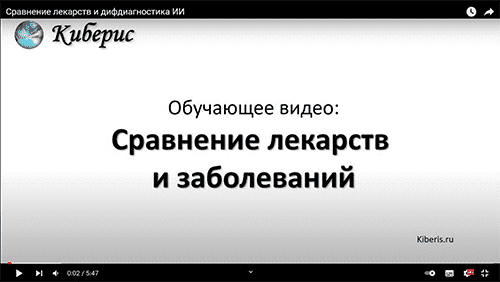Distinctive symptoms
Register , to see more distinctive signs of diseases and studies52% —
Register , to see more distinctive signs of diseases and studies— 90%
hemolytic anemia
30%
—
suppuration of the skin —
56%
diamond-blackfen anemia
28%
—
abscess —
43%
antinuclear factor
27%
—
inflammation of the kidneys —
38%
anemia, unspecified
26%
—
antineutrophilic cytoplasmic antibodies —
34%
overlaid tongue
25%
—
wound —
32%
pancytopenia
24%
—
bad breath unpleasant —
30%
aplastic anemia in children
23%
—
inflammation —
30%
consequences of taking medications
33%
9%
necrosis —
28%
alcoholism
21%
—
bilateral pneumonia —
27%
anemia
35%
12%
neonatal sepsis —
26%
thrombocytopenia
20%
—
congestion purulent wounds —
25%
underdevelopment
20%
—
acute endocarditis —
23%
myelodysplastic syndrome
20%
—
boil —
23%
fanconi anemia
20%
—
subacute septic endocarditis —
23%
alcohol dependence
19%
—
folliculitis —
22%
nephronophthys fanconi
17%
—
sepsis —
22%
hemochromatosis
16%
—
prolonged fever —
22%
anemia in children
16%
—
enlargement of the thyroid gland —
22%
remission
16%
—
streptococci —
21%
erythrocytic anemia
16%
—
glomerulonephritis —
21%
erythroblastopenia
15%
—
diffuse toxic goiter —
21%
allgrove syndrome
15%
—
thyrotoxicosis —
21%
bone defects
14%
—
pneumococcal infection —
21%
bilirubin is elevated
14%
—
lung abscess —
20%
anisocytosis
13%
—
spondylodiscite —
20%
hypersplenism
13%
—
meningitis —
19%
congenital myopia
13%
—
shock states of various genesis —
19%
reticulocytosis
13%
—
constant chills —
18%
cirrhosis of the liver
13%
—
parvovirus infection —
17%
serum sickness
12%
—
abscess of the spleen —
17%
lymphocytosis
12%
—
there is heart failure —
17%
cardiorenal syndrome in children
12%
—
heart failure —
17%
periodic headaches
12%
—
worse in morning —
17%
rapid reaction
11%
—
heart failure with shortness of breath —
17%
lags behind in the development
11%
—
escherichiosis —
17%
reticulocytopenia
11%
—
nosocomial infections —
16%
erythrocytosis
11%
—
joint diseases —
16%
decrease in ESR
10%
—
cancer —
16%
congenital anomalies of the upper extremities
10%
—
microbial eczema —
16%
is better in nature
10%
—
aortic regurgitation —
16%
microphthalmos
10%
—
bacterial pneumonia —
16%
posttransfusion complications
10%
—
pulmonary edema —
16%
volume of spleen is increased
9%
—
subarachnoid hemorrhage —
16%
history of laparoscopic surgery
9%
—
dyspnea —
15%
herpes
9%
—
effects of shock —
15%
connective tissue dysplasia
9%
—
oncology —
15%
attacks of pain
9%
—
broths —
15%
trembling with increased pressure
9%
—
acute condition —
15%
headache with weakness
8%
—
arthritis —
14%
intoxication with iron preparations
8%
—
nose thrombophilia —
14%
pain in the vessels of the head
8%
—
chronic eczema —
14%
frequent headaches
8%
—
a history of prosthetics —
14%
increase in creatinine
8%
—
violation of the left parts of the heart —
14%
Common symptoms are weakness
8%
—
heart murmurs —
14%
red hands
8%
—
roth's disease —
14%
anomalies of kidney development
8%
—
impaired spleen function —
14%
periodic weakness
8%
—
leukocytosis —
14%
pigmentation of teeth
8%
—
pectoris cardiac dyspnea —
14%
paroxysmal nocturnal hemoglobinuria
8%
—
the taste of acetone in the mouth —
14%
enlarged liver
8%
—
hyperfibrinogenemia —
14%
scalp soreness
7%
—
tricuspid insufficiency —
14%
hair anomalies
7%
—
retinal hemorrhage —
14%
onychodystrophy
7%
—
atrial fibrillation —
14%
tingling in the fingers
7%
—
permanent arrhythmia —
13%
herpetic pneumonia
7%
—
infected wounds —
13%
fever activity
7%
—
ARVI —
13%
general weakness
7%
—
ischemic stroke —
13%
frequent colds
7%
—
up worse at 6 am —
13%
serious condition
7%
—
after heart surgery —
13%
rash on the scalp
7%
—
violation of the right departments hearts —
13%
head tremor
7%
—
transient ischemic attack —
13%
increased ferritin
7%
—
coronary thrombosis —
13%
early gray
7%
—
wound inflammation —
13%
systemic mycosis
7%
—
hyperproteinemia —
13%
nausea and vomiting in the morning
7%
—
lack of breath —
13%
loose stools in the morning
7%
—
penicillin allergy —
13%
tingling in the hands
7%
—
supraventricular arrhythmia —
13%
thin
7%
—
intrauterine pneumonia —
13%
congenital aplasia of the skin
7%
—
dermatitis and eczema —
13%
congestive kidney
7%
—
worse from salty —
13%
nausea with increased pressure
7%
—
chills
5%
18%
hypotonic crisis
7%
—
nephropathy
5%
18%
gynecomastia
7%
—
acute pain —
13%
pneumocystis pneumonia
7%
—
metastases —
13%
hemarthrosis
7%
—
effects of drugs —
13%
itching of the scalp
7%
—
pulmonary embolism —
13%
temperature urticaria
7%
—
hypercoagulation syndrome —
13%
hemoglobinuria
7%
—
spleen infarction —
13%
leukoplakia
7%
—
arrhythmia attacks —
13%
decreased ferritin
7%
—
regurgitation on tricuspid valve is lowered —
12%
fungal mycosis
7%
—
eczema —
12%
tingling in the fingers
7%
—
exanthema —
12%
suspension
7%
—
loose body —
12%
headaches
11%
2%
worse during day —
12%
no children
7%
—
back pain —
12%
prolonged headaches
6%
—
consequences of cardiovascular surgery —
12%
increased potassium
6%
—
myocardial infarction —
12%
effects of overwork
6%
—
torrential sweats —
12%
fever with muscle pain
6%
—
warty tuberculosis of the skin —
12%
increased hairiness
6%
—
kidney damage —
12%

